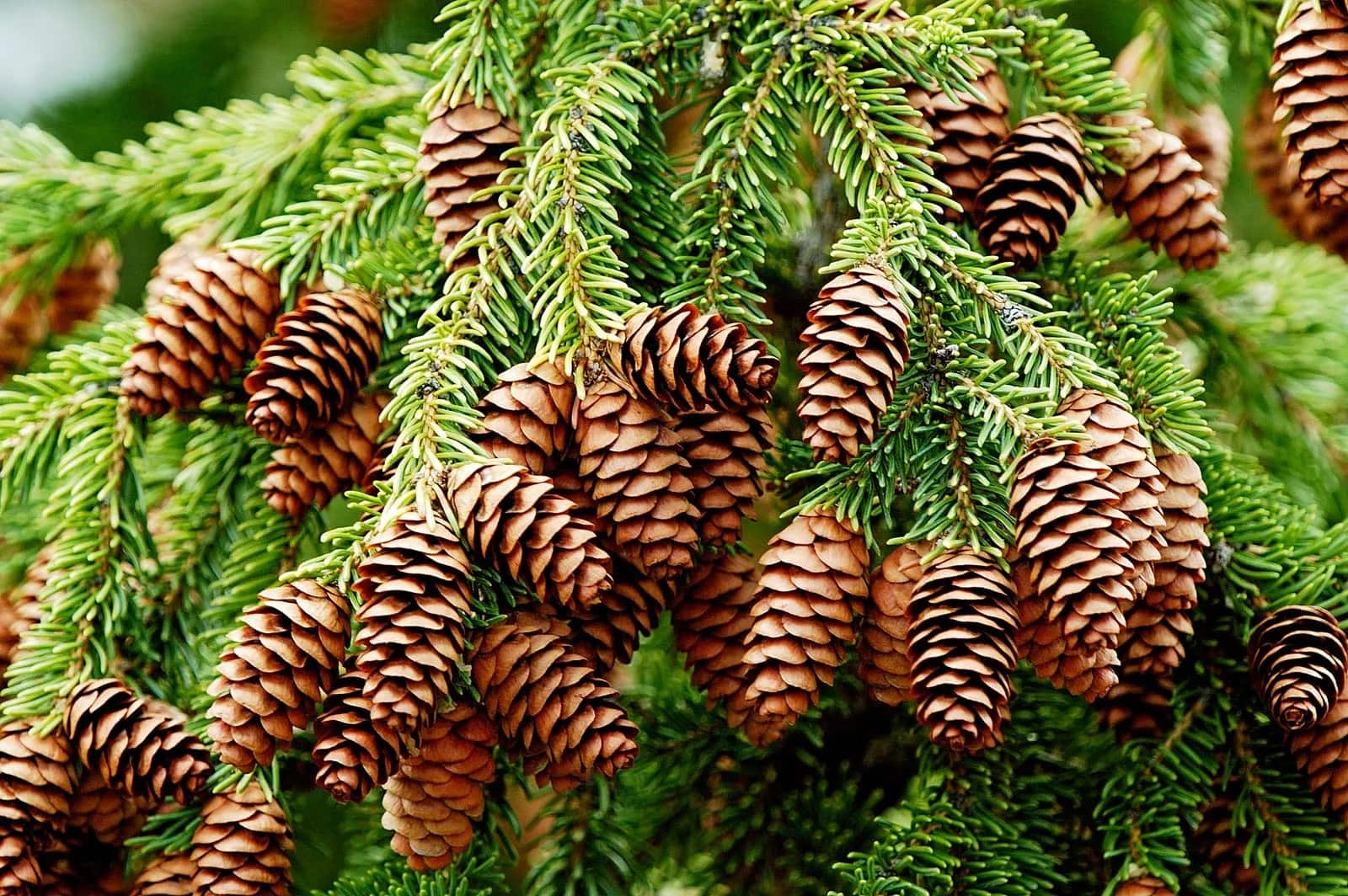
Spruce trees are iconic symbols of the natural world, known for their majestic beauty and vital ecological role. These evergreen conifers belong to the genus Picea and are renowned for their towering height, needle-like leaves, and distinctive cones. Found in diverse habitats across the Northern Hemisphere, spruce trees have captivated the human imagination for centuries, featuring prominently in folklore, art, and traditional medicine.
In this article, we'll delve into 18 fascinating facts about spruce trees, shedding light on their ecological significance, cultural importance, and unique characteristics. From their role in forest ecosystems to their use in timber production and holiday traditions, spruce trees hold a special place in the hearts of nature enthusiasts and environmentalists alike. Join us on a journey through the enchanting world of spruce trees, where we'll uncover the hidden wonders of these remarkable conifers.
Key Takeaways:
- Spruce trees are resilient evergreen conifers with square needles, valued for wood, medicinal properties, and habitat provision. They play a vital role in folklore, holiday decorations, and carbon sequestration, enriching our natural world.
- Spruce trees, with their iconic appearance and diverse uses, contribute to biodiversity, art, and literature. Despite vulnerability to pests and windthrow, they symbolize the interconnectedness and resilience of the natural world, captivating and inspiring us.
Spruce Trees Are Evergreen
Spruce trees are evergreen conifers, meaning they retain their foliage throughout the year. This characteristic makes them a symbol of resilience and vitality in many cultures.
Spruce trees are known for their distinctive conical shape and needle-like leaves, which contribute to their iconic appearance in forests and landscapes.
Spruce Trees Belong to the Genus Picea
The scientific name for spruce trees is Picea, a genus that encompasses about 35 species. These trees are distributed across the Northern Hemisphere, thriving in diverse climates and elevations.
Spruce Needles Have a Square Shape
One unique feature of spruce trees is the square shape of their needles. When rolled between your fingers, the needles of a spruce tree feel angular, setting them apart from the rounded needles of other conifers.
Spruce Trees Produce Cones
Spruce trees bear distinctive cones that hang down from the branches. These cones contain seeds and play a crucial role in the tree's reproductive cycle.
Spruce Trees Are Valued for Their Wood
The wood of spruce trees is highly prized for its versatility and strength. It is commonly used in construction, musical instruments, and paper production.
Spruce Trees Have Medicinal Properties
Certain species of spruce trees have been used in traditional medicine for their therapeutic properties. The needles and resin of spruce trees are known for their potential health benefits.
Spruce Trees Provide Habitat for Wildlife
Spruce forests offer a vital habitat for a diverse array of wildlife, including birds, mammals, and insects. The dense foliage and ample branches of spruce trees create a sanctuary for many species.
Spruce Trees Can Thrive in Cold Climates
Spruce trees are well-adapted to cold climates, with some species flourishing in subarctic regions. Their ability to withstand harsh winters makes them a resilient presence in northern landscapes.
Spruce Trees Are Symbolic in Folklore
In various cultures, spruce trees hold symbolic significance. They are often associated with longevity, wisdom, and protection, and are featured in myths and traditions around the world.
Spruce Trees Are Used in Holiday Decorations
The boughs and branches of spruce trees are commonly used in holiday decorations, particularly during the festive season. Their fresh, fragrant foliage adds a touch of natural beauty to homes and public spaces.
Spruce Trees Are Vulnerable to Pests
Despite their hardiness, spruce trees are susceptible to pests such as spruce budworms and bark beetles, which can pose significant threats to their health.
Spruce Trees Can Live for Centuries
Some species of spruce trees have an impressive lifespan, with certain individuals living for several centuries. Their enduring presence in forests is a testament to their resilience and adaptability.
Spruce Trees Play a Role in Carbon Sequestration
As with other trees, spruce trees play a vital role in capturing and storing carbon dioxide, thereby contributing to the mitigation of climate change.
Spruce Trees Have Varied Uses in Indigenous Cultures
Indigenous communities have historically utilized spruce trees for a wide range of purposes, including crafting tools, building shelters, and preparing traditional remedies.
Spruce Trees Are Prone to Windthrow
Due to their shallow root systems, spruce trees are susceptible to windthrow, a phenomenon in which strong winds uproot them from the ground. This characteristic makes them a subject of study in forestry and environmental science.
Spruce Trees Are a Source of Aromatic Oils
The needles and resin of spruce trees yield aromatic oils that are used in perfumery, aromatherapy, and natural remedies. These oils are prized for their refreshing and invigorating scents.
Spruce Trees Are Celebrated in Art and Literature
Throughout history, spruce trees have been celebrated in art, literature, and folklore, serving as subjects of inspiration and symbolism in creative works.
Spruce Trees Contribute to Biodiversity
The presence of spruce trees in ecosystems enhances biodiversity, providing food, shelter, and nesting sites for a multitude of organisms.
Spruce trees are truly remarkable entities that enrich our natural world in countless ways. Their enduring presence in forests, their cultural significance, and their ecological contributions underscore their importance in the tapestry of life on Earth. Whether admired for their majestic beauty, utilized for their practical benefits, or revered for their symbolic value, spruce trees continue to captivate and inspire us, embodying the resilience and interconnectedness of the natural world.
Conclusion
In conclusion, spruce trees are remarkable members of the conifer family, known for their majestic beauty and valuable contributions to the environment. From their significance in forestry and landscaping to their cultural and historical importance, spruce trees hold a special place in the natural world. Their resilience, adaptability, and diverse uses make them a vital part of ecosystems and human societies alike. By understanding the fascinating facts about spruce trees, we gain a deeper appreciation for these iconic evergreens and the vital role they play in our lives.
FAQs
What are the main characteristics of spruce trees?Spruce trees are characterized by their conical shape, needle-like leaves, and distinctive cones. They are known for their vibrant green foliage and the pleasant scent emitted by their resin.
How are spruce trees beneficial to the environment?Spruce trees contribute to the environment by providing habitat for wildlife, preventing soil erosion, and absorbing carbon dioxide. Additionally, they are valuable in reforestation efforts and contribute to the overall health of forest ecosystems.
Spruce trees captivate with their evergreen beauty and fascinating characteristics. Beyond the 18 facts explored here, delve deeper into the world of spruces by learning about the unique qualities of Meyer spruce trees. Expand your knowledge with 19 additional spruce facts that showcase their ecological importance and cultural significance. For a truly remarkable experience, discover the unbelievable facts surrounding Lake Kaindy, where spruce trees create an otherworldly underwater forest. Continue your journey of exploration and uncover more intriguing aspects of these magnificent trees and the natural wonders they inhabit.
Was this page helpful?
Our commitment to delivering trustworthy and engaging content is at the heart of what we do. Each fact on our site is contributed by real users like you, bringing a wealth of diverse insights and information. To ensure the highest standards of accuracy and reliability, our dedicated editors meticulously review each submission. This process guarantees that the facts we share are not only fascinating but also credible. Trust in our commitment to quality and authenticity as you explore and learn with us.


